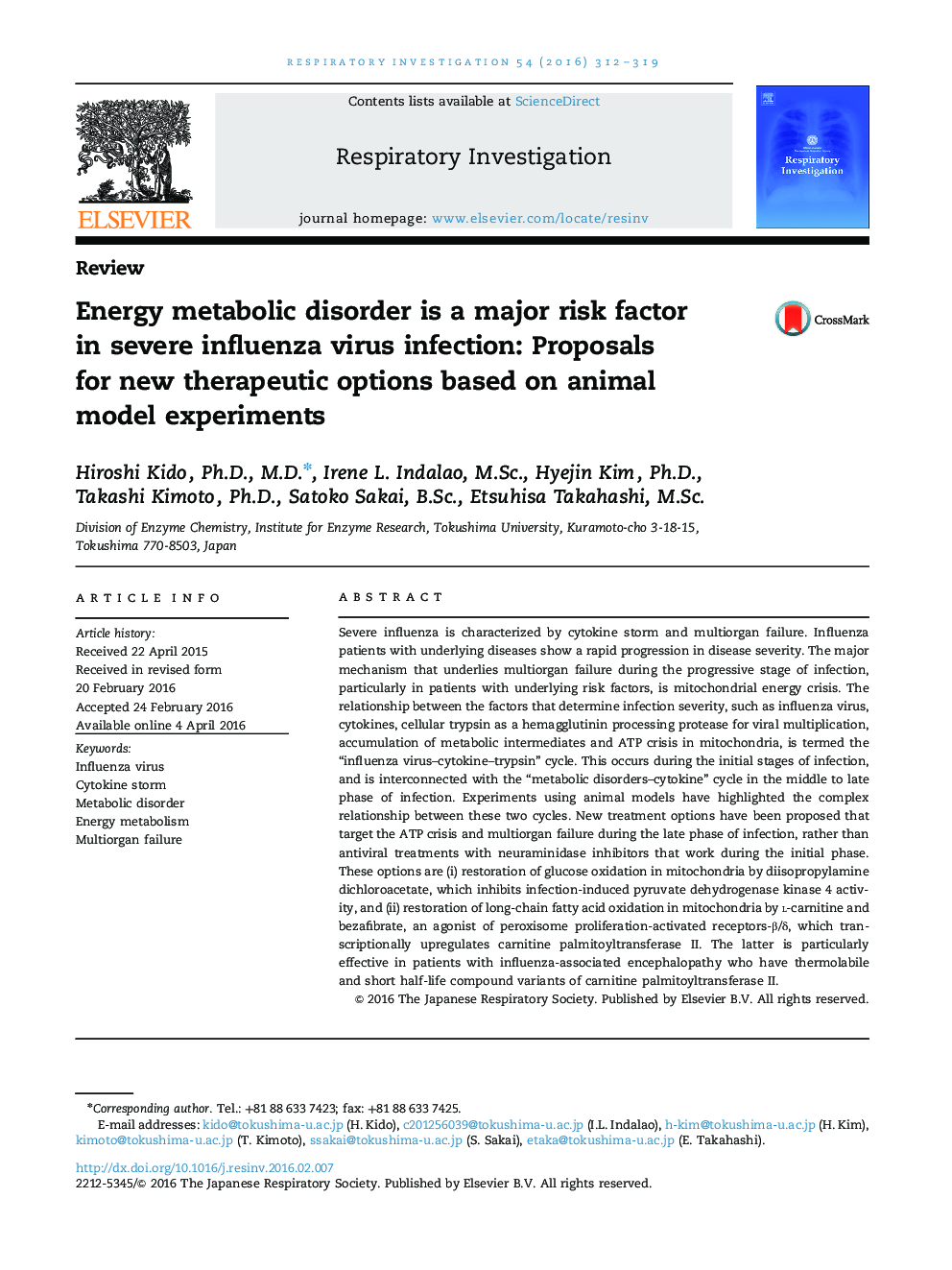| کد مقاله | کد نشریه | سال انتشار | مقاله انگلیسی | نسخه تمام متن |
|---|---|---|---|---|
| 3418534 | 1593811 | 2016 | 8 صفحه PDF | دانلود رایگان |
Severe influenza is characterized by cytokine storm and multiorgan failure. Influenza patients with underlying diseases show a rapid progression in disease severity. The major mechanism that underlies multiorgan failure during the progressive stage of infection, particularly in patients with underlying risk factors, is mitochondrial energy crisis. The relationship between the factors that determine infection severity, such as influenza virus, cytokines, cellular trypsin as a hemagglutinin processing protease for viral multiplication, accumulation of metabolic intermediates and ATP crisis in mitochondria, is termed the “influenza virus–cytokine–trypsin” cycle. This occurs during the initial stages of infection, and is interconnected with the “metabolic disorders–cytokine” cycle in the middle to late phase of infection. Experiments using animal models have highlighted the complex relationship between these two cycles. New treatment options have been proposed that target the ATP crisis and multiorgan failure during the late phase of infection, rather than antiviral treatments with neuraminidase inhibitors that work during the initial phase. These options are (i) restoration of glucose oxidation in mitochondria by diisopropylamine dichloroacetate, which inhibits infection-induced pyruvate dehydrogenase kinase 4 activity, and (ii) restoration of long-chain fatty acid oxidation in mitochondria by l-carnitine and bezafibrate, an agonist of peroxisome proliferation-activated receptors-β/δ, which transcriptionally upregulates carnitine palmitoyltransferase II. The latter is particularly effective in patients with influenza-associated encephalopathy who have thermolabile and short half-life compound variants of carnitine palmitoyltransferase II.
Journal: Respiratory Investigation - Volume 54, Issue 5, September 2016, Pages 312–319
